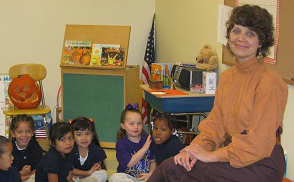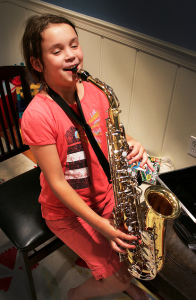News & Announcements
- Details
- Written by Joshua Wachtel
 IIRP Canada and FaithCARE (Communities Affirming Restorative Experiences), a program of Shalem Mental Health Network, announce a three-day event February 5-7, 2013 for congregations interesting in building restorative cultures. The two organizations draw on five years of experience working with congregations as outlined in this article, FaithCARE: Creating Restorative Congregations, which includes stories about how the program has helped congregations, as well as interviews with program leaders.
IIRP Canada and FaithCARE (Communities Affirming Restorative Experiences), a program of Shalem Mental Health Network, announce a three-day event February 5-7, 2013 for congregations interesting in building restorative cultures. The two organizations draw on five years of experience working with congregations as outlined in this article, FaithCARE: Creating Restorative Congregations, which includes stories about how the program has helped congregations, as well as interviews with program leaders.
Event: Learning How to Grow Restorative Churches
When: February 5-7, 2013, 9 a.m. - 4:30 p.m.
Where: Queen of the Apostles, 1617 Blythe, Mississauga, ON L5H 2C3
Fee: Includes training and coaching. $400 before January 15, 2013; $425 thereafter. 10% discount for two or more registrants from one organization.
- Details
- Written by Joshua Wachtel
 Hampstead Hill Academy, a public charter school for elementary age students in Baltimore, Maryland, adopted the use of restorative practices school-wide beginning in January 2008. Hampstead Hill partners with the Baltimore Curriculum Project, "a nonprofit organization that empowers four neighborhood charter schools in East Baltimore with the tools they need to help every child succeed." Baltimore Curriculum Project also works with City Springs Elementary School.
Hampstead Hill Academy, a public charter school for elementary age students in Baltimore, Maryland, adopted the use of restorative practices school-wide beginning in January 2008. Hampstead Hill partners with the Baltimore Curriculum Project, "a nonprofit organization that empowers four neighborhood charter schools in East Baltimore with the tools they need to help every child succeed." Baltimore Curriculum Project also works with City Springs Elementary School.
Below are some of the statistical data that Hampstead Hill has used to assess the impact of restorative practices on discipline and the school environment.
- Details
- Written by Joshua Wachtel
This Wednesday evening, December 19th, at 5pmPST/8pmEST, The Peace Alliance presents a free hourlong program with Steve Korr, an IIRP instructor, as part of its "Restorative Justice Telecouncil Series." Registration for the telecouncil will also get you access to the program archive which is in its second year. The teleseries is hosted by Molly Rowan Leach.
- Details
- Written by Joshua Wachtel
For this Sunday's video I'm posting a short video of youth leader Edward Ward's testimony during the Senate's "School to Prison Pipeline" hearing convened by Senator Dick Durbin Wednesday afternoon. Ward is 20-years-old and the organization he represents, Blocks Together from Chicago, is a member of the Dignity in Schools campaign, which had a heavy presence at the hearing.
- Details
- Written by Joshua Wachtel
 As part of its journey to become a "restorative city," Wanganui, New Zealand recently hosted "Associate Professor at the Dalhousie University Schulich School of Law, and a director of the Nova Scotia Restorative Justice Community University Research Alliance in Canada, Professor Llewellyn ... to speak to members of the Whanganui Restorative Practices Trust, local lawyers and the Wanganui District Council."
As part of its journey to become a "restorative city," Wanganui, New Zealand recently hosted "Associate Professor at the Dalhousie University Schulich School of Law, and a director of the Nova Scotia Restorative Justice Community University Research Alliance in Canada, Professor Llewellyn ... to speak to members of the Whanganui Restorative Practices Trust, local lawyers and the Wanganui District Council."
This is according to Merania Karauria for the Wanganui Chronicle. The piece, titled "A crusader changing the way we relate to people" continues:
- Details
- Written by Joshua Wachtel
 via woodleywonderworks at Flickr Creative CommonsJoyce Dawley is a music teacher in Bethlehem Area School District and a student in the IIRP graduate school who plans to graduate next spring (2013). I talked to her the other day about how she is using restorative practices with her students, and also with adults she works with.
via woodleywonderworks at Flickr Creative CommonsJoyce Dawley is a music teacher in Bethlehem Area School District and a student in the IIRP graduate school who plans to graduate next spring (2013). I talked to her the other day about how she is using restorative practices with her students, and also with adults she works with.
Joyce has integrated restorative practices into her small group teaching as well as large group band and orchestra conducting. Normally she works with small groups of two to six students for a half hour at a time throughout the day. Students leave their regular classes once a week to attend music lessons. Joyce takes time to run circles with these groups to get to know students better. In particular she asks them questions relevant to music, including: “Are you having trouble practicing? Why or why not?”
Oftentimes, Joyce says, she ends up finding out a lot of things about her students’ home lives, because it turns out that a big reason students have trouble practicing is that they have troubled home lives. One student Joyce initially wrote off as lazy because he only came to every third lesson and didn’t practiced much. Then she found out that he really did want to practice but that he had significant family issues that made this hard. His parents were divorced and his living situation was unreliable. He never knew where he would be staying and often his trombone got left at his father’s when he was at his mother’s and vice versa. Once Joyce learned this, she changed her attitude about how she dealt with that student. In another case a student’s grandmother died and the family was busy dealing with that.
- Details
- Written by Joshua Wachtel
To follow up on Friday's post, there's this piece from the New York Times by Donna Lieberman, executive director of the New York Civil Liberties Union. She begins by relaying a tragic story of a student with Asperger's syndrome who is roughly arrested in school for an offense which amounts to "contempt of cop." His is not an isolated case, just one of 882 arrests in New York City public schools during the 2011-12 school year.
The entire piece is interesting, but I would note this passage:
In New York City, the Police Department has a special unit to protect students in public schools. With some 5,000 agents, the School Safety Division is larger than all but a handful of the country’s big-city police departments: there are nearly twice as many safety officers in city schools as guidance counselors and nearly four times as many safety officers as social workers.
Read the rest here: Take Police Officers Off the School Discipline Beat - NYTimes.com.
- Details
- Written by Joshua Wachtel
A recent blog post at EdWeek by Sarah Sparks points to a new research study, to be published in the January 2013 issue of the Sociology of Education, which demonstrates a link between teenage arrests and school pushout:
While 64 percent of Chicago students who were never arrested eventually earned a high school diploma, the graduation rate for students who had been arrested was only 26 percent. Similarly, only 16 percent of students with an arrest record eventually enrolled in a four-year colleges, compared with 35 percent of students with a diploma or GED who avoided the legal system. Arrested students were also more likely to have missed school, failed a grade, or been identified for special education, even though the researchers found little difference in the IQ of students arrested and not.
- Details
- Written by Joshua Wachtel
 The following statement issued by Senator Dick Durbin's office:
The following statement issued by Senator Dick Durbin's office:
Assistant Majority Leader Dick Durbin (D-IL), Chairman of the Senate Judiciary Subcommittee on the Constitution, Civil Rights and Human Rights, today announced he would hold a hearing on the school-to-prison pipeline next Wednesday, December 12, 2012.
The first-ever Congressional hearing on the matter will investigate the troubling increase in the number of young people sent to the juvenile delinquency system as a result of relatively minor school discipline issues. Since the 1990s, many students nationwide have been pushed out of the classroom and into the courts for relatively minor, non-violent offenses. Once young people enter the criminal justice system, they are more likely to fail in school and commit new crimes, creating increased public safety risks.
This “school-to-prison pipeline” also wastes scarce government resources on ineffective policies and has led to striking racial disparities. Over 70 percent of students in school-related referrals to law enforcement are African-American or Latino. The hearing will explore the problems with the pipeline as well as successful reforms and new initiatives to help end it.
- Details
- Written by Joshua Wachtel
I'm sensing a lot of vibrant discussion going on in the UK about how to reinvent the justice system to include a lot more restorative justice (see recent post here.) Here's the latest example via RJ Online which has published excerpts from a piece by Lawrence Kershen writing for The Law Society Gazette:

Restorative Works Year in Review 2023 (PDF)
All our donors are acknowledged annually in Restorative Works.
